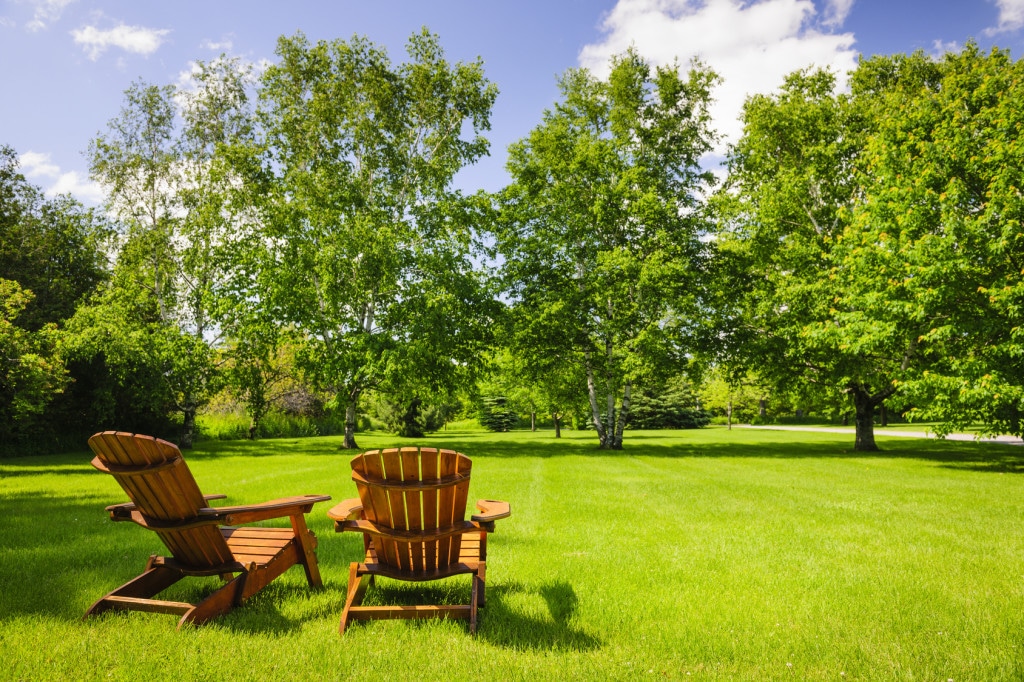
As temperatures rise and New England blooms into summer, it’s time to get your Massachusetts lawn in shape. But while you’re planning green grass and backyard barbecues, there’s more to think about than just mowing and watering. Tick- and mosquito-borne illnesses like Lyme disease and West Nile virus are a real concern in our region, and harsh chemical treatments can harm beneficial pollinators and even your pets.
The good news? You can prepare your lawn for summer and protect your family, pets, and the environment. Here’s how.
1. Start with a Healthy Lawn
A healthy lawn is your first line of defense against pests—and it looks great, too.
- Dethatch and aerate in late spring to improve airflow and reduce moisture buildup, which can attract ticks and mosquitoes.
- Seed with native, drought-resistant grasses that thrive in Massachusetts’s climate. Look for mixes with fescue and ryegrass that require less watering and chemicals.
- Mow high (3–4 inches) to promote deep roots and crowd out weeds without stressing your grass.
2. Target Problem Areas for Ticks and Mosquitoes
Ticks and mosquitoes thrive in damp, shady areas. Here’s how to keep them in check:
- Trim back brush and tall grass along the edges of your yard and around stone walls and woodpiles—these are tick hotspots.
- Remove standing water weekly from birdbaths, buckets, and clogged gutters to stop mosquitoes from breeding.
- Create a tick-safe zone by adding a 3-foot gravel or wood chip barrier between your lawn and wooded areas.
3. Use Pollinator-Friendly Pest Control
Many traditional pesticides kill pollinators like bees, butterflies, and ladybugs. Instead, opt for eco-conscious options that keep pests at bay without harming beneficial insects.
- Cedar oil sprays and garlic-based repellents can deter ticks and mosquitoes naturally without leaving a toxic residue.
- Biological controls like Bacillus thuringiensis israelensis (Bti) target mosquito larvae without harming pollinators or pets.
- Nematodes (tiny beneficial worms) can be applied to control ticks in soil without chemicals.
Look for products labeled “pollinator-safe” and avoid spraying during the day when bees are most active—early morning or dusk is best.
4. Plant with Pollinators in Mind
A lawn isn’t just grass—it’s part of your local ecosystem. Support bees, butterflies, and other helpful bugs by integrating pollinator-friendly plantings.
- Add flowering native plants like bee balm, coneflower, and black-eyed Susan around your lawn’s perimeter or in garden beds.
- Avoid neonicotinoid-treated seeds, which can harm pollinators even in trace amounts.
- Leave a few dandelions or clover patches—early-season favorites for bees.
5. Protect Pets and Kids—Naturally
When treating your yard, always consider who plays on it.
- Choose organic lawn care services or DIY solutions that are labeled as safe for kids and pets.
- Keep pets out of treated areas for 24–48 hours, even with natural products.
- Educate your family on tick checks after outdoor play, especially around ankles, behind ears, and along the waistline.
Final Thoughts
You don’t have to choose between a lush summer lawn and a safe, eco-friendly yard. With a bit of planning and the right products, you can enjoy the best of both worlds: a green, thriving lawn that’s safe for your family and welcoming to pollinators.
Ready to take the first step? Start by walking your yard today—look for areas that need attention, and make a plan that works for your family, your lawn, and the planet.
